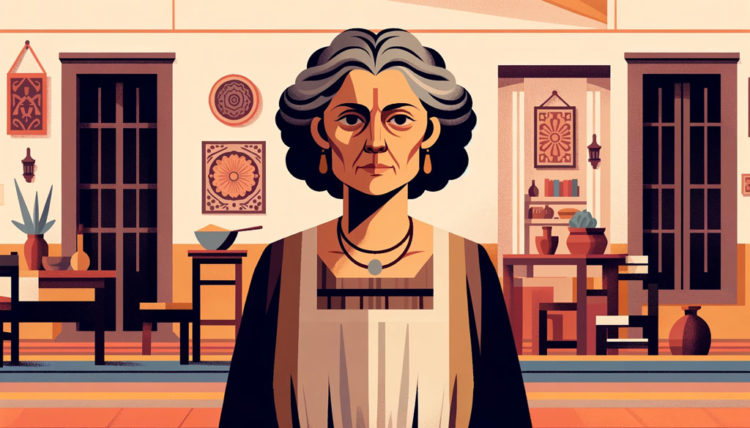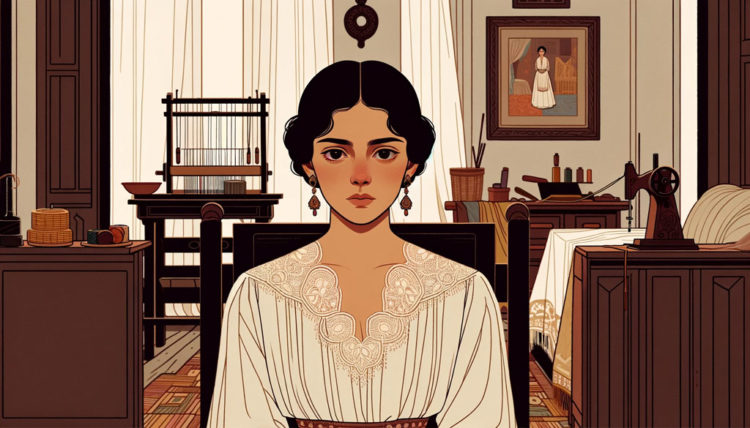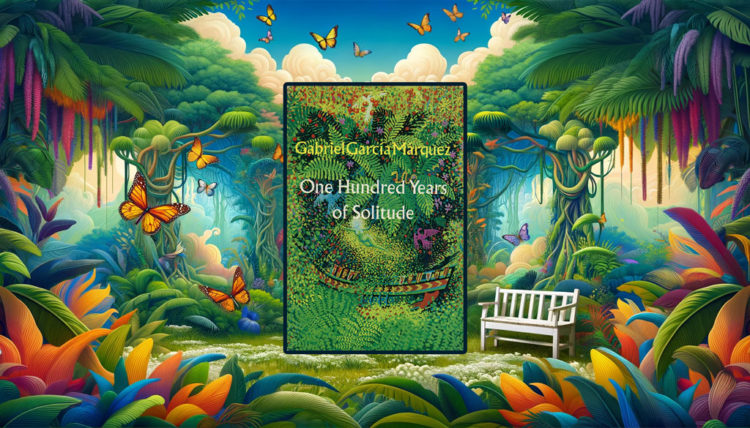Finally, here’s my summary of “One Hundred Years of Solitude”. It’s a renowned novel by Colombian author Gabriel García Márquez, first published in 1967. The book is a seminal work of magical realism, a genre that blends realistic narrative with surreal elements. It tells the multi-generational story of the Buendía family in the fictional town of Macondo, weaving together the personal, political, and mythical. García Márquez’s unique narrative style in this work has made it one of the most significant novels of the 20th century.
Short Recap of The Novel
It follows the story of the Buendía family, founders of the fictional Colombian town of Macondo. The narrative spans several generations, starting with the family patriarch, José Arcadio Buendía, who establishes Macondo with his wife Úrsula. The town evolves from a secluded paradise into a bustling, troubled community, paralleling the Buendías’ own tumultuous history. The family members, often sharing names across generations, experience intense passions, grandiose pursuits, and tragic downfalls. Their lives are marked by extraordinary events, such as a perpetual rain of flowers and a woman ascending to heaven, exemplifying the novel’s magical realism style.
The town evolves from a secluded paradise into a bustling, troubled community, paralleling the Buendías’ own tumultuous history. The family members, often sharing names across generations, experience intense passions, grandiose pursuits, and tragic downfalls. Their lives are marked by extraordinary events, such as a perpetual rain of flowers and a woman ascending to heaven, exemplifying the novel’s magical realism style.
As the story unfolds, recurring themes and events illustrate the cyclical nature of time and history within the Buendía family. Characters such as Colonel Aureliano Buendía and his many sons engage in relentless civil wars, while others, like José Arcadio and Amaranta, grapple with personal obsessions and unrequited love. The novel culminates with the last Buendía, who unravels a prophecy foretelling the family’s fate. In a striking finale, a cataclysmic whirlwind destroys Macondo, symbolizing the inevitable end of the Buendía lineage and the ephemeral nature of human existence, leaving a powerful commentary on solitude, destiny, and the human condition.
Comprehensive Plot Summary of “One Hundred Years of Solitude”
Founding of Macondo
The novel begins with José Arcadio Buendía and Úrsula Iguarán, who leave their hometown of Riohacha, Colombia, to find a new home. They eventually settle and found the town of Macondo. José Arcadio becomes obsessed with scientific pursuits and the search for the mythical city of gold, El Dorado, leading to his eventual madness and isolation.
The Buendía Family
The story follows the Buendía family through several generations, each marked by repeated names, particularly José Arcadio and Aureliano. The family members experience intense passions, engage in various pursuits, and encounter both love and tragedy. Key characters include Colonel Aureliano Buendía, who becomes a central figure in civil wars, and his brother José Arcadio, who returns to Macondo after a series of adventures.
Magical Elements
Magical realism permeates the novel. Extraordinary events occur, such as Remedios the Beauty ascending to heaven and a plague of insomnia that makes people forget their memories. These elements blend seamlessly with the reality of the characters’ lives, creating a mystical atmosphere that defines Macondo.
The Rise and Decline of Macondo
Macondo grows from a vibrant, isolated town into a bustling community influenced by external forces, including foreign companies exploiting its resources. This leads to societal changes, conflicts, and ultimately the decline of both the town and the Buendía family.
Cyclical Nature of Time
Throughout the novel, events and characteristics recur in the lives of the Buendía family, suggesting a cyclical view of history. The characters seem destined to repeat the mistakes and experiences of their ancestors, highlighting themes of fate and determinism.
The End of the Buendía Line
The novel culminates with the last member of the Buendía family, Aureliano. He deciphers an ancient manuscript written by Melquíades, a gypsy who had befriended the family’s founder. This manuscript reveals that the family’s history is predestined, repeating the same patterns of rise, fall, and solitude.
Destruction of Macondo
In the final pages, as Aureliano reads the manuscript, a catastrophic whirlwind destroys Macondo. The town’s erasure symbolizes the end of the Buendía family and the cyclical nature of their history. The novel concludes with a haunting reflection on the inevitability of solitude and the ephemeral nature of human endeavors.
Main Characters Breakdown And Analysis
José Arcadio Buendía
- Personality: Imaginative, adventurous, and obsessed with scientific pursuits and the supernatural.
- Age: His age progresses from a young man to an elderly figure over the course of the novel.
- Gender: Male
- Role: Founder of Macondo and the Buendía family patriarch.
- Arc: Begins as an ambitious leader, becomes increasingly obsessed with alchemy and the search for El Dorado, leading to his insanity and eventual death in solitude.
- Notable Aspects: His obsession with scientific and mystical pursuits distances him from his family, leading to his tragic isolation.
Úrsula Iguarán
- Personality: Strong-willed, pragmatic, and the family’s moral and practical anchor.
- Age: Lives to be over a hundred years old, witnessing the entire saga of her family and Macondo.
- Gender: Female
- Role: Matriarch of the Buendía family, co-founder of Macondo.
- Arc: Maintains the family and the household through the generations, often acting as a voice of reason.
- Notable Aspects: Her longevity and resilience make her a witness to the cyclical nature of the family’s history.
Colonel Aureliano Buendía
- Personality: Introspective, melancholic, and eventually disillusioned by war and politics.
- Age: His story spans from youth to old age.
- Gender: Male
- Role: Second son of José Arcadio Buendía and Úrsula Iguarán.
- Arc: Transforms from a withdrawn child to a key figure in the country’s civil wars. He eventually becomes disillusioned with his cause and retires into solitude.
- Notable Aspects: His involvement in numerous uprisings reflects the political turmoil of Colombia. He fathered 17 sons, all named Aureliano, with various women.
Amaranta
- Personality: Passionate, proud, and often driven by jealousy and unfulfilled desires.
- Age: Followed from early childhood to her death.
- Gender: Female
- Role: Daughter of José Arcadio Buendía and Úrsula.
- Arc: Known for her beauty and passion, she experiences a series of unrequited loves and intense rivalries, especially with her sister-in-law, Rebeca.
- Notable Aspects: Her life is marked by romantic turmoil and the eventual voluntary vow of chastity, leading to a lonely death.
José Arcadio
- Personality: Impulsive, strong-willed, and physically robust.
- Age: His story is followed from a young age until his adulthood.
- Gender: Male
- Role: Firstborn of José Arcadio Buendía and Úrsula.
- Arc: He leaves Macondo but eventually returns as a mysterious and powerful figure.
- Notable Aspects: His return to Macondo and subsequent actions significantly impact the family’s dynamics.
Remedios the Beauty
- Personality: Innocent, naive, and oblivious to her own stunning beauty.
- Age: Young adulthood.
- Gender: Female
- Role: Daughter of Arcadio and Santa Sofía de la Piedad, a descendant of the Buendía line.
- Arc: Remains entirely indifferent to her beauty, which causes turmoil in those around her.
- Notable Aspects: Her ascension to heaven in broad daylight is one of the novel’s most memorable magical realism moments.
Aureliano Segundo and José Arcadio Segundo
- Personality: Aureliano Segundo is extravagant and hedonistic, while José Arcadio Segundo is more reserved and contemplative.
- Age: Their lives are chronicled from youth to old age.
- Gender: Male
- Roles: Twin brothers, grandsons of the original José Arcadio Buendía.
- Arcs: Aureliano Segundo lives a life of excess and eventually reconciles with his wife Fernanda del Carpio, while José Arcadio Segundo becomes involved in the labor movement and isolated in his later years.
- Notable Aspects: Their identities are confused at birth and possibly switched, adding to the novel’s themes of cyclical and mirrored lives.
Interesting Facts About “One Hundred Years of Solitude”
- Multiple Languages: The novel has been translated into over 46 languages, making it one of the most translated works in modern literature.
- Nobel Prize: Gabriel García Márquez won the Nobel Prize in Literature in 1982, largely due to the impact of “One Hundred Years of Solitude” on the literary world.
- Massive Sales: The book has sold more than 50 million copies worldwide, making it one of the best-selling books in history.
- Magical Realism: The novel is a quintessential example of magical realism, a literary style that incorporates magical elements into otherwise realistic settings.
- Time Magazine: In 2007, “One Hundred Years of Solitude” was included in Time magazine’s list of the 100 best novels published since 1923.
- Political Reflection: The story reflects the political and social struggles of Latin America, including the impact of colonialism and the banana massacre, a real event in Colombian history.
- Family Tree Complexity: The novel’s complex family tree with recurring names often challenges readers, making it a common point of discussion among literary scholars.
- Influence on Literature: It has significantly influenced not only Latin American literature but also authors and readers worldwide, becoming a staple in the study of world literature.
- Unique Structure: The novel lacks traditional chapter divisions, presenting its story in a continuous flow that contributes to its dreamlike, timeless feel.
- Film Adaptation Rights: Despite numerous attempts, no film adaptation has been made. García Márquez famously refused to sell the film rights, purportedly concerned that the book’s dense and multi-layered narrative would not translate well to film.
Frequently Asked Questions
What is the Significance of the Title “One Hundred Years of Solitude”?
The title reflects the predominant theme of solitude experienced by the Buendía family and the town of Macondo. It symbolizes the isolation each character faces and the cyclical, solitary nature of the family’s history over a century.
How Does Magical Realism Play a Role in the Novel?
Magical realism is central to the novel, blending fantastical elements with a realistic setting. This style creates a surreal atmosphere where extraordinary events, like a woman ascending to heaven or a prolonged rainstorm, are treated as ordinary, reflecting the characters’ acceptance of the magical as part of their reality.
What are the Main Themes of the Novel?
Key themes include solitude, the cyclical nature of history, the inevitability of fate, and the illusions of progress. The novel also explores the impact of time on human lives, the complexity of family dynamics, and the interplay between personal desires and societal changes.
Who is the Main Character of the Novel?
The novel doesn’t have a single main character but rather focuses on the entire Buendía family. Each family member, from the patriarch José Arcadio Buendía to his descendants, plays a significant role in the overarching narrative.
What Does Macondo Symbolize in the Novel?
Macondo, the fictional town in the novel, symbolizes both utopia and the complexities of modern society. It represents a world untouched by external influences and the inevitable changes brought by progress and outside forces, reflecting the history and fate of Latin America.
What is the Importance of the Buendía Family Tree?
The Buendía family tree is crucial to understanding the novel’s complex narrative and the recurring themes and cycles within the family. The repeated names and mirrored lives of the Buendías emphasize the novel’s exploration of time, history, and fate.
My Review
“One Hundred Years of Solitude” is a masterpiece that redefines the boundaries of conventional storytelling. Gabriel García Márquez’s novel is not just a book but a rich tapestry of humanity, woven with threads of magical realism, deep psychological insight, and a profound understanding of the human condition. Its disregard for linear time and conventional narrative structure is not just innovative but revolutionary, challenging readers to immerse themselves in a world where the magical is mundane and the mundane, magical.
The novel’s portrayal of the cyclical nature of history and the inescapable solitude of human existence is a bold, unflinching reflection of life itself. This is a work that doesn’t just tell a story; it captures the essence of what it means to be human in all its complexity, glory, and despair. The sheer audacity of Márquez in blending fantasy with reality elevates this novel to a realm of literature that few works can hope to reach, making it an indispensable gem in world literature.
Is Gabriel García Márquez a literary wizard or just an illusionist? 🌟📚 Share your thoughts and cast your spell in the comments below! 🎩✨🔮







Comments